
Gekkonidae is the largest family of geckos, containing over 950 described species in 62 genera. The Gekkonidae contain many of the most widespread gecko species, including house geckos (Hemidactylus), the tokay gecko (Gekko), day geckos (Phelsuma), the mourning gecko (Lepidodactylus), and dtellas (Gehyra). Gekkonid geckos occur globally and are particularly diverse in tropical areas. Many species of these geckos exhibit an adhering ability to surfaces through Van der Waals forces utilizing intermolecular forces between molecules of their setae and molecules of the surface they are on.

The band-rumped swift is a species of bird in subfamily Apodinae of the swift family Apodidae. It is found from Panama south through Colombia into Ecuador, east from Venezuela into the Guianas and Brazil, and on Trinidad.

The grey-rumped swift or gray-rumped swift is a species of bird in subfamily Apodinae of the swift family Apodidae. It is found in Honduras, Nicaragua, Costa Rica, and Panama; in every mainland South American country except Chile, French Guiana, Suriname, and Uruguay; in Trinidad and Tobago; and on Grenada.
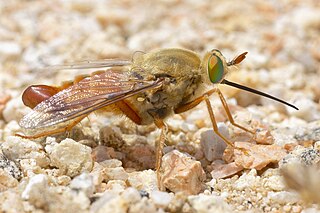
The mydid fly genus Rhaphiomidas contains fewer than 30 species/subspecies, all of them occurring in the desert regions of the southwestern United States and adjacent portions of northwestern Mexico. The adults are most commonly encountered in sand dune areas, and are typically only active for a few weeks each year, either in the spring or the fall; in some cases, more than one species can occur in the same dune system, but they are allochronic, each flying in different seasons. Almost nothing is known about their biology, though eggs or early instar larvae of some species are laid on the soil surface and appear to be attractive to ants, and are brought into the ant nest. The restriction to sand dune areas has unfortunately led a number of these flies to the brink of extinction, especially both subspecies of R. terminatus, and the species R. trochilus. While there is only one of these on the Endangered Species List, many of the remaining taxa - including a few that have not yet been named - are gravely imperiled, as they are restricted to small geographic areas, rendering them extremely vulnerable to habitat loss or disturbance. These habitats are heavily targeted for development, and even if not, activities such as sand mining or motorized off-roading are common, and render the habitat unsuitable for the survival of the flies.
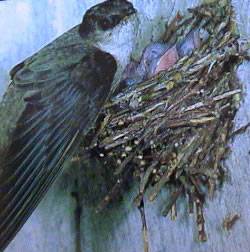
Chaetura is a genus of needletail swifts found in the Americas. Although they resemble swallows, the two are not at all closely related; this is instead a result of convergent evolution. Some members of Chaetura are long-distance migrants, while others are year-round residents.
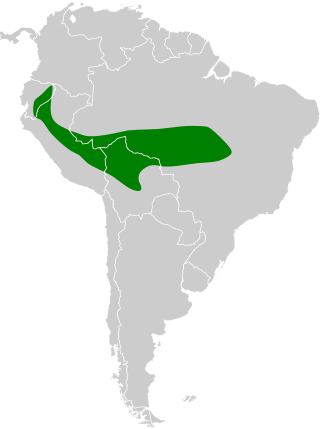
The pale-rumped swift is a species of bird in subfamily Apodinae of the swift family Apodidae. It is found in Bolivia, Brazil, Colombia, Ecuador, and Peru.

The Costa Rican swift is a species of bird in subfamily Apodinae of the swift family Apodidae. It is found in Costa Rica and Panama.
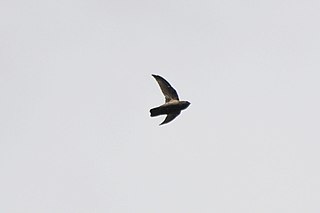
The Lesser Antillean swift is a species a species of bird in subfamily Apodinae of the swift family Apodidae. It is found on Dominica, Guadeloupe, Martinique, Saint Lucia, Saint Vincent, and possibly Nevis.
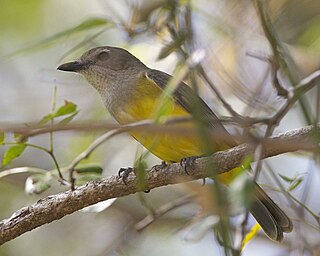
The mangrove golden whistler or black-tailed whistler, is a species of bird in the family Pachycephalidae. It is found in mangrove forests and adjacent wet forests of Papua New Guinea and Australia.

The shrike-babblers are a group of small birds in the genus Pteruthius. They are native to the Indomalayan realm, and were traditionally placed in the family Timaliidae before molecular phylogenetic studies in 2007 found that they were best considered as belonging to the family Vireonidae which was then thought to be restricted to the New World. They were traditionally classified into five species with several subspecies but changes in the status of these species on the basis of the phylogenetic species concept suggest more forms in a cryptic species complex. Most species are found in montane forests, with some species descending down to lower altitudes during the winter.
The Jacundá National Forest is a sustainable-use national forest in the state of Rondônia, Brazil.

The Apodinae are a subfamily of swifts and contain the following species:
Kolekanos is a genus of African gecko found in Angola. It contains two species:
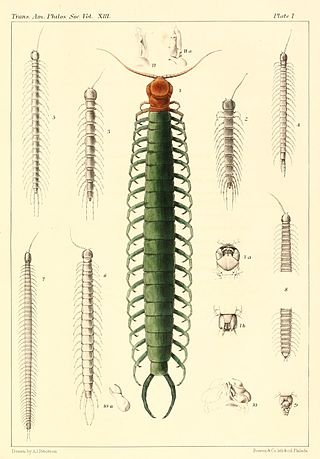
Scolopocryptops is a genus of bark centipedes in the family Scolopocryptopidae. There are over 20 described species in Scolopocryptops.
Xizicus is a genus of Asian bush crickets belonging to the tribe Meconematini in the subfamily Meconematinae. They are found in India, China, Korea, and Indochina.
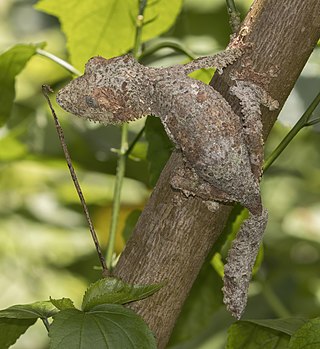
Uroplatinae is a subfamily of geckos in the family Gekkonidae. At least 28 genera have been found to be cluster in a clade together. In the past this was once a monotypic subfamily that included Uroplatus.
Kolekanos plumicauda is a species of African gecko found in Angola.

Otostigmus is a genus of centipedes in the family Scolopendridae. It was first described by Swedish naturalist Carl Oscar von Porat in 1876. The genus as a whole comprises around 157 species, found primarily in the Neotropics.













